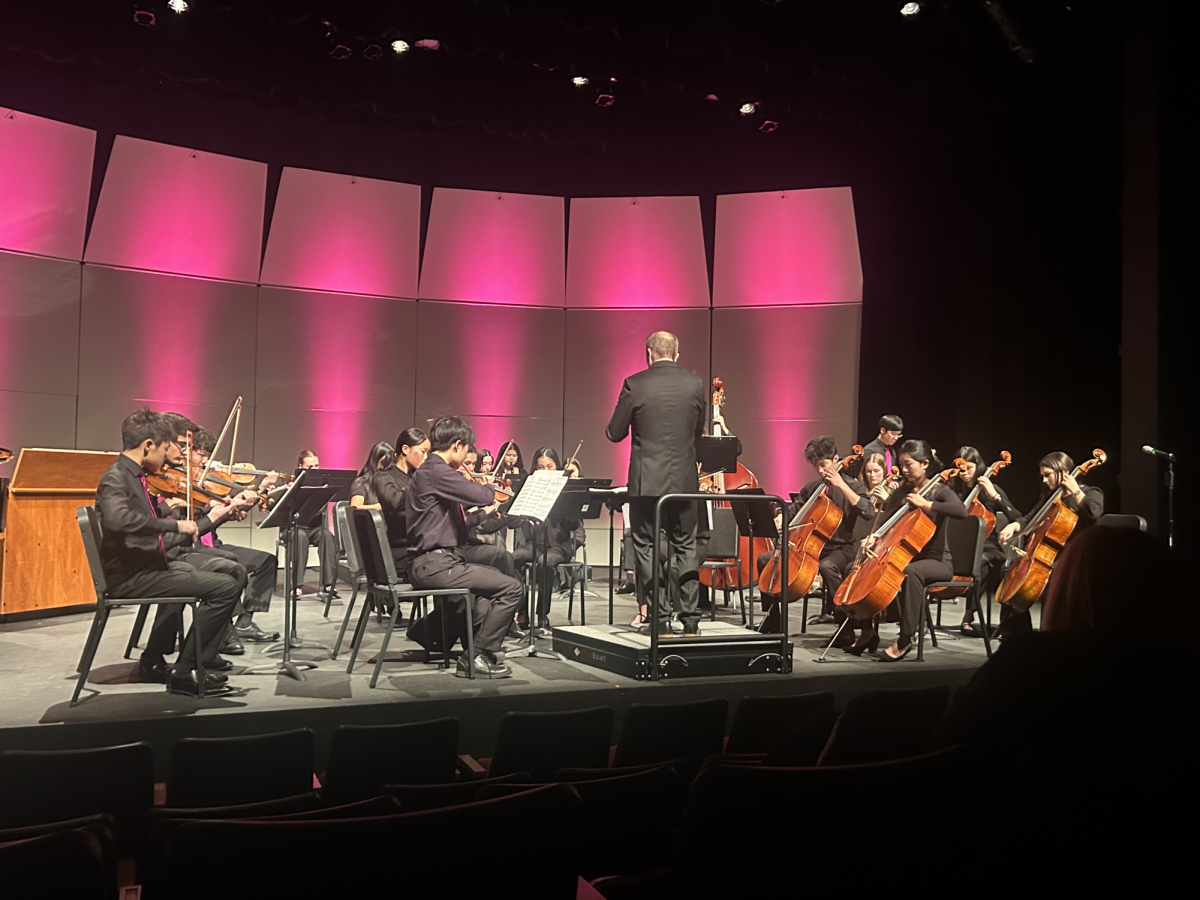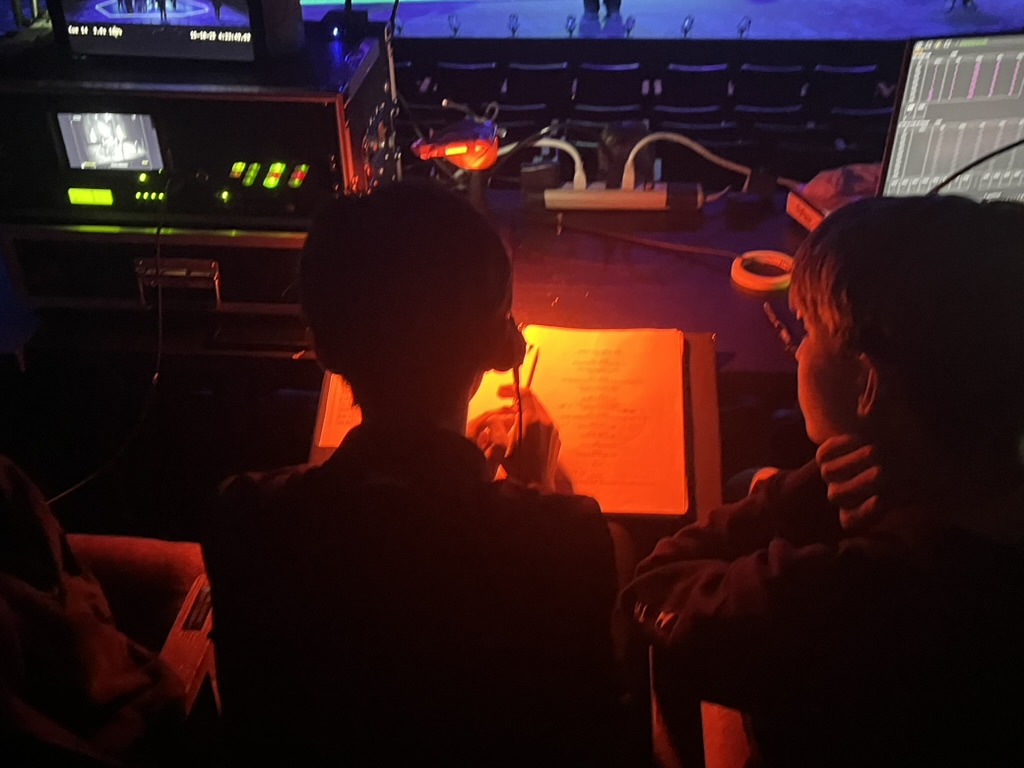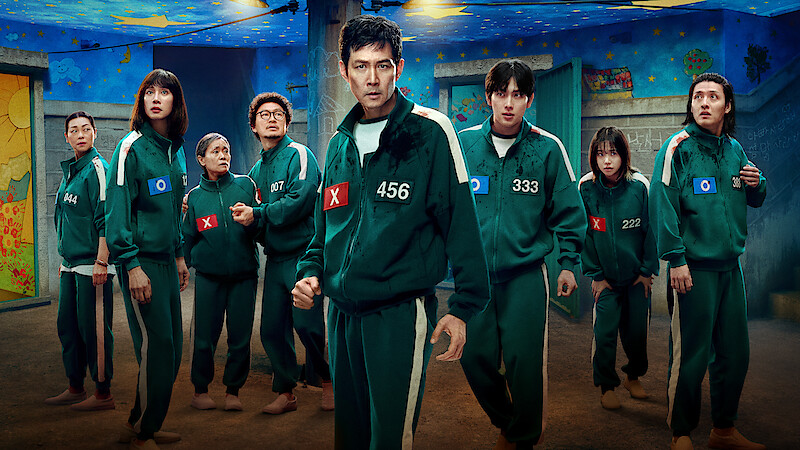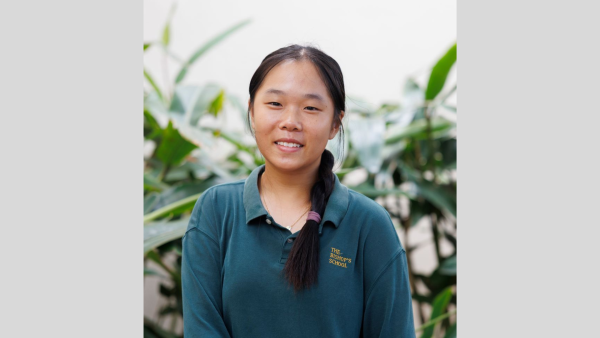In an age where digital entertainment dominates, the Bishop’s orchestra gave an exceptional live performance, weaving whimsical plucks of the string with the fierce intensity of lively tangoes.
On Friday January 17th, the Taylor Performing Arts Center held two showings of the orchestra’s winter concert, featuring solos, ensembles, performed by both the middle and upper school orchestras, and led by Mr. Robert Anderson, the conductor and instructor of the students.
The concert opened with five individual performances, all on the piano. Sashi Chuckravanen (‘25) opened the concert, playing the third movement of Sonata No. 8 in C Minor by Beethoven, followed by Alisa Timmerman (‘28), Elaina Lee (‘29), and Genevieve Wierzynski (‘28) who played both modern pieces, like Kiss the Rain by Yiruma, and also classical ones, such as Canon by Johann Pachelbel and Intermezzo by Johannes Brahms. “The whole thing was a little nerve wracking, especially the solo,” Sashi said. “I think that the transitions are kind of hard. I ended up splicing together two different parts of the piece to make it finish smoothly.”
There were also three ensembles and a duet, featuring the viola, violin, cello, and flute. One such performance was Astor Piazzolla’s Libertango, performed by Annika Mody ‘27, Julia Schnabl ‘28, and Genevieve Wierzynski ‘28, beautifully highlighting the vibrant and energetic spirit of the dramatic tango.
Following the ensembles, the middle school orchestra took the stage with a set of four pieces, guided by five upper school mentors who played alongside them. Sashi, one of those five students, reflected on the experience of helping the younger orchestra. For her, being a part of an orchestra that truly benefited from their guidance added a unique sense of purpose. She also admired the middle school students’ genuine passion, as they had no need to fulfill any academic art credits. The program seamlessly transitioned from a playful “Folk Song and Shanty” to the peaceful tunes of “Lullaby,” before ending with Franz Schubert’s “Rosamunde”.
As for the upper school chamber orchestra, their repertoire first began with “Blue Tango” and “Two South American Tangos,” two pieces that immediately set an evocative tone to the final section of the concert. Ethan Yang ‘27, who held the position of concertmaster, said, “These pieces are short but they feature some very interesting harmonies and a great percussion part.”
Next came Haydn’s “Farewell Symphony,” which was composed as a way to convince a Hungarian prince to allow the homesick group to leave the palace they were performing at and return home to their families. Throughout this piece, one by one, performers in the wind section of the chamber orchestra got up and walked offstage, humorously mirroring the original performance of 1772. Abigail Wei ‘26, a flutist and one of those who moved behind curtains, admitted, “I was nervous about tripping, but I enjoyed it. It’s rare to incorporate physical movement like this in classical music, and it made the piece feel more dynamic for both the musicians and the audience.”
But the pinnacle was Schubert’s “Unfinished Symphony,” the grand finale of the 2-hour concert. Composed in 1822 and famously left incomplete with only two movements, the piece is shrouded in mystery and emotion. It is also the personal favorite of many of the performers. “I think the theme at the beginning is really ominous,” Chris Zheng ‘27 said. “It sounds so cool when we perform it live.” Abigail echoed the sentiment, and added, “The beginning has an almost haunting melody, but it slowly builds and by the climax, the music is super powerful and energetic.”
Preparations for the concert began in September, well over four months ago. In the first two weeks, most of the practice was outside of rehearsal, though later, the group came together to put together all the different pieces together for the final product.
The process wasn’t without difficulties, though. “I think the biggest challenge for a lot of musicians is just finding time to practice,” said Chris Zheng (‘27), one of the chamber orchestra’s violinists. While rehearsals occurred every Thursday evening, students had to also find time outside of school to practice pieces they struggled with. Mr. Anderson added, “It’s not a class, just after school activity. Students have to give up one of their afternoons or evenings every week to come and rehearse difficult music.”
The concert was not only a powerful interpretation of Haydn and Schumann’s works, but also a display of the effort that brought each piece to fruition.
“To my students, I am continually inspired by your hard work, attending after school rehearsals and dedicating your time to this program,”wrote Mr. Anderson on the last page of the concert program. “Thank you for bringing this music to life and for sharing your artistry with us this evening.”




![Jackson Weisser (‘26), who played the title role of Beowulf, explained, “This adaptation specifically portrays Beowulf as having selfless motivations for a lot of his actions, and I think that's really powerful. Being more so a good person than a super physically intimidating person needing to fight all the time, is what I [want the audience to take away] from my performance of the character.”](https://thebishopstower.com/wp-content/uploads/2025/10/Beowolf26_047-800x1200.jpg)
![Leia (‘30) and Sara Park (‘32) ended their combative performance with a yell known as a kiyap. Leia explained with a proud smile, “I realized this when I was little, but not many people see taekwondo every day. For me, it’s a daily occurrence, so it feels very normal…when I do [a performance] in public, everyone’s like ‘Wow, that’s really cool’. So it always reminds me how this isn’t a normal thing in other people’s lives and I think it’s really cool that I can share that.”](https://thebishopstower.com/wp-content/uploads/2025/10/Screenshot-2025-10-02-at-2.07.47-PM.png)


